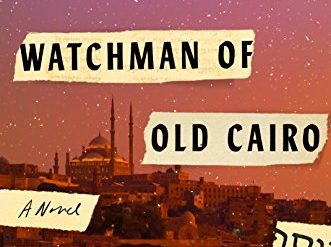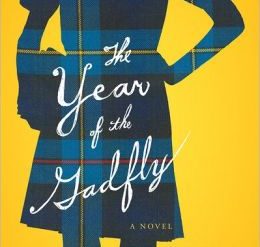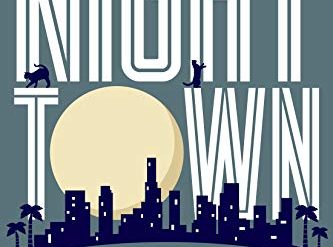
It’s impossible to survey the history of the United States without recognizing that our nation’s prosperity rests, in part, on four centuries of genocide directed at the native peoples Europeans found on these shores. But because European colonists did such an efficient job of murdering the people they encountered, the surviving population of Native Americans is small compared to that of African Americans. The upshot is that few of us think about their plight when we speak of the role racism has played in our history. And most of us are even less aware of our government’s role in fostering Indian cultural genocide.
Only in an occasional film or TV production or a rare work of fiction such as the novels of Louise Erdrich are we forced to remember this shameless record. And Erdrich’s latest reminds us that the terror didn’t end with the Indian Wars. Well into the twentieth century some of our nation’s political leaders remained intent on undermining Indian languages and community life even though the wholesale murder of Native men, women, and children had long since ended.
The Night Watchman by Louise Erdrich (2020) 464 pages ★★★★★
Winner of the 2021 Pulitzer Prize for Fiction

A moving account of life on a reservation
In her moving account of life on a North Dakota reservation in the mid-1950s, Erdrich dwells on the lives of two sisters, Patrice (“Pixie”) and Vera Paranteau. Patrice holds a job in a nearby factory that allows her to support her mother, younger brother, and her deadbeat drunken dad. Vera has fled to the city with a husband who soon deserted her. They are cousins of the tribal chairman who is the central figure in this novel. Yet the cast of characters is large, involving other well-drawn figures in the community. This affords Erdrich with the opportunity to project a panoramic view of life on the reservation. A handful of non-Indians live there, too. And their stories figure as well in the tale.
An intensely personal story based on the author’s family history
The Night Watchman is an intensely personal novel. Set in 1953 and 1954, it’s the story of Erdrich’s grandfather, Patrick Gourneau, fictionalized as the character of Thomas Wazhashk. (The Slavic-seeming surname is nothing of the sort. It’s an Ojibwe word meaning “muskrat.”) Like the author’s grandfather, Wazhashk is the chairman of the Turtle Mountain Band of Chippewa Indians in North Dakota.
A tale of resistance to Indian cultural genocide
Confronted with the threat of Congressional action to terminate the rights and Federal services granted to his people, Wazhashk mobilizes them in an intensive campaign of resistance. Remarkably, he also enlists the support of local elected officials who stand to lose jobs and retail revenue if the community is forced to abandon their land and move to the cities. Eventually, Wazhashk leads a tribal delegation to Washington to testify against the pending legislation.
A story firmly grounded on historical fact
Although Wazhashk is a fictional character, the two US Senators who figure in this story are not. Milton Young (R-ND) served in the United States Senate from 1945 to 1981; he was supportive of Wazhashk to a degree. Arthur V. Watkins (R-UT) was the driving force in the Senate behind the legislation and his primary adversary. Erdrich portrays Watkins, a Mormon and a rigidly conservative Republican, as an arrogant and self-righteous man devoid of sympathy for anyone who did not share his faith.
Antecedents for Indian cultural genocide
As Erdrich writes, “Joseph Smith and the early Mormons had tried their best to murder all Indians in their path across the country, but in the end did not quite succeed. Arthur V. Watkins decided to use the power of his office to finish what the prophet had started. He didn’t even have to get his hands dirty.”
As Erdrich reports in an Afterword and Acknowledgments, “Of the initial tribes slated for termination, the Turtle Mountain delegation was the first to mount a fierce defense and prevail. . . 113 tribal nations suffered the disaster of termination; 1.4 million acres of tribal land was lost. Wealth flowed to private corporations, while many people in terminated tribes died early, in poverty.” In the end, then, the effect of Indian cultural genocide is little different from the mass murder that colonists committed from the 1500s through the 1800s.
About the author

Louise Erdrich is well known as one of our country’s most distinguished novelists. What is less well known is that she is a member of a remarkable family who would make her grandfather proud. Her mother was “an artist who meticulously saved my grandfather’s letters and the mimeographed chairman’s reports that included his articles and jokes.” Her uncle, Dwight Gourneau, chairs the board of the Smithsonian’s National Museum of the American Indian. Her sister is a writer and poet. Erdrich herself is the author of seventeen novels and a book of short stories. The Round House won the National Book Award for Fiction, and LaRose won the National Book Critics Circle Award for Fiction. And she has won numerous other prestigious literary awards.
For related reading
This is one of the 10 best historical novels set in America.
Previously I’ve reviewed two other outstanding novels by Louise Erdrich:
- The Plague of Doves (Tragedy, on and off the reservation)
- The Round House (Louise Erdrich’s haunting new novel of a brutal crime on the reservation)
I also reviewed another recent novel by a Native American author, one I didn’t enjoy: There There by Tommy Orange (A bestselling new novel casts a bright light on urban Indian life).
Check out Top 20 popular books for understanding American history and Good books about racism reviewed on this site.
You might also be interested in:
- 20 most enlightening historical novels
- Top 10 great popular novels
- Top 10 historical mysteries and thrillers
And you can always find my most popular reviews, and the most recent ones, on the Home Page.


























